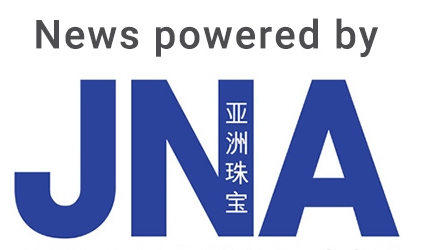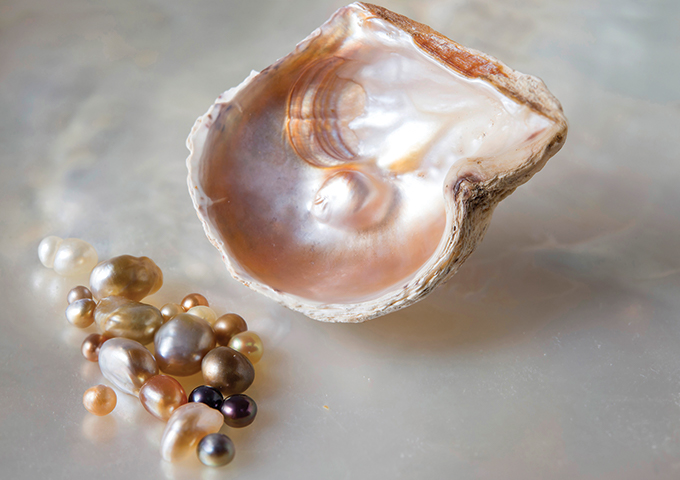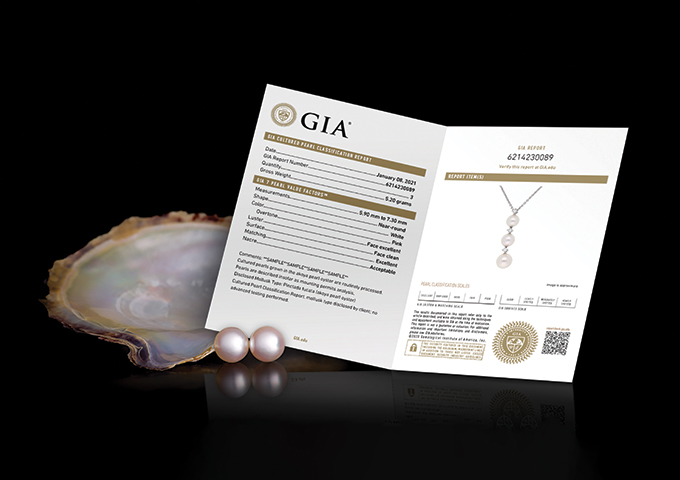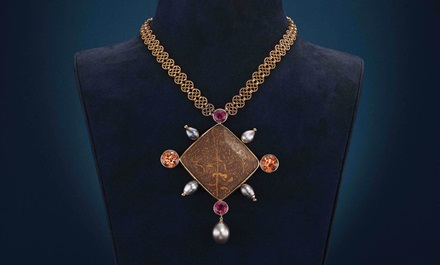Backed by decades of know-how and experience in the pearl trade, GIA is reinforcing its reputation as the authority on pearl identification and grading.
This article first appeared in the Pearl Report 2022-2023.
Ever committed to studying the science behind the pearl’s beauty, the Gemological Institute of America (GIA) has pursued pearl knowledge and research since 1949.
Over the decades, it has built a solid standing in the field of pearl testing, making it the go-to institute for traders, auction houses, museums and collectors to examine rare specimens, including the Empress Eugenie pearls and the Saffron Dragon melo pearl. GIA also issues world-renowned pearl reports.
Identifying pearls
Natural pearls form when a foreign “intruder” irritates the mantle of a mollusc. The mollusc secretes calcium carbonate, often as nacre, to protect itself from the irritant. A pearl forms as the mollusc deposits more and more layers. “Natural pearls are rare. Roughly one in 10,000 molluscs will produce a pearl and of those produced, most are small and irregular in shape,” explained GIA. “Large natural pearls that are round or drop-shaped are incredibly valuable.”
Many of these pearls, such as La Peregrina or the Baroda pearls, were owned by royalty and carry significant historical value. In 1917, millionaire Morton Plant famously traded his Fifth Avenue mansion for a double strand of natural pearls by Cartier.
By comparison, cultured pearls form through human intervention when a nucleus is inserted into a mollusc to spur pearl growth. The nucleus is often a round shell bead, which determines the pearl’s size and shape. The most common cultured nacreous pearls are South Sea, Tahitian, Akoya and freshwater. Each pearl forms in a different type of mollusc and has distinct characteristics.
Telling natural and cultured pearls apart often requires testing in a gemmological laboratory with sophisticated instruments. GIA scientists identify pearls by using X-ray techniques such as real-time microradiography (RTX) and X-ray computed microtomography (μ-CT) to analyse a pearl’s internal structure.
Nacreous pearls are the most popular type in the market, but natural non-nacreous pearls such as melo and conch are also rare and highly treasured.
Classifying pearls
GIA classifies pearls using the GIA 7 Pearl Value Factors™, which were created to describe the quality of nacreous pearls in a systematic and easily understandable way. These include size, shape, colour, lustre, surface, nacre and matching.
The pearl’s mysterious beauty can be complex to analyse. For instance, colour alone includes bodycolor, overtone and orient. GIA experts compare pearls to a set of carefully pre-selected pearl masters to determine colour and classify other value factors. “All pearls submitted to our laboratories are independently analysed by two different teams of GIA pearl experts to ensure a precise and objective evaluation,” the company said.
GIA Pearl Reports
Armed with a GIA report, clients can rest assured that they know the identity and quality of their pearls. The institute offers three different pearl reports: GIA Pearl Identification Report, GIA Pearl Identification and Classification Report and the GIA Cultured Pearl Classification Report.
Beloved throughout history, pearls, aptly referred to in the trade as the queen of gems and the gem of queens, are at the forefront of design trends in both women’s and men’s jewellery. GIA noted, “Whether natural or cultured, pearl quality can vary widely. Some pearls undergo treatments like dyeing that can affect their value dramatically. Your stunning jewels deserve the expertise of GIA’s scientists. Know you are getting the best when you purchase pearls that come with a GIA Pearl Report.”











